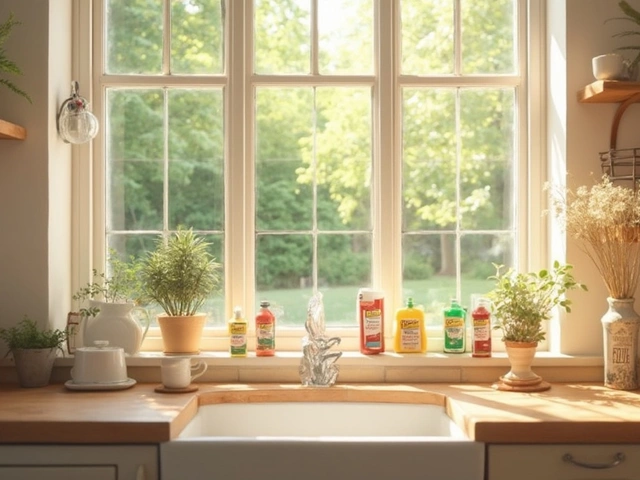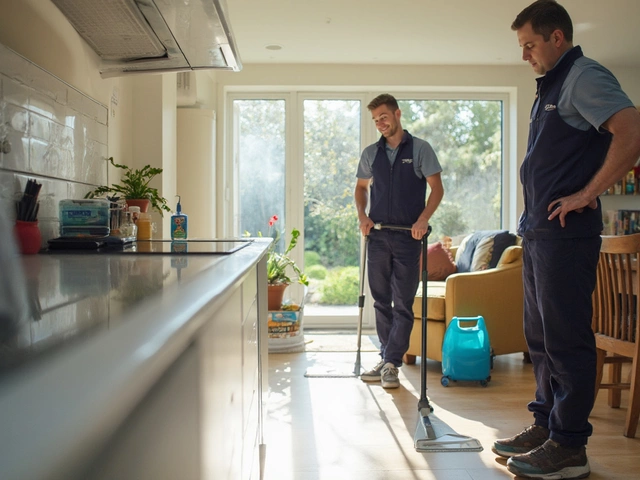Everyone wants their windows to gleam and sparkle, but finding the right solution can be a daunting task. Countless products and methods promise the best results, yet not all live up to expectations. This guide aims to shed light on the most effective ingredients you can use to achieve spotless windows with ease.
From the tried and tested vinegar to the surprising wonders of baking soda, we'll uncover the benefits of each method. Whether you prefer the simplicity of natural cleaners or the efficiency of commercial products, there's a solution for every window dilemma. With these tips, window cleaning can transform from a mundane chore to a simple, satisfying task.
The Power of Vinegar
Vinegar has long been championed as a wonder ingredient in the realm of household cleaning, especially when window cleaning is concerned. Its acidic nature and ability to dissolve mineral deposits make it particularly effective at removing the stubborn residues that often cloud our windows. A staple in many homes, vinegar doesn't just cut through grime, but also offers a streak-free shine that rivals even the most expensive commercial options. People are often surprised at how such a simple solution can outperform some of the best-known window cleaners on the market. The acetic acid in vinegar makes it incredibly adept at breaking down the films of dirt and grease that accumulate on glass surfaces, without leaving any residue.
The versatility of vinegar doesn't stop at its cleaning power. Beyond its chemical properties, it's an environmentally friendly alternative, making it the cleaner of choice for those mindful of chemical exposure in their homes. Commercial products often contain a concoction of unnecessary chemicals that can irritate your eyes and skin, not to mention the environmental impact. In contrast, vinegar offers a sustainable option that is both effective and safe. Many households have incorporated it not just as an alternative but as the primary means of maintaining clean windows. The Centers for Disease Control and Prevention even acknowledges vinegar as a valuable and natural cleaning option.
"Vinegar, due to its natural acidity, is a fantastic cleaner and disinfectant, especially in environments where you're trying to reduce chemical exposure," notes an expert from the Environmental Working Group.
When you decide to utilize vinegar for cleaning your windows, it's crucial to mix it properly to maximize its efficacy. A common mixture is one part vinegar to one part water, which balances the strength of the vinegar's acetic acid with the cleaning power of water to tackle even the toughest stains while avoiding potential damage or residue. If your windows have particularly tough spots, you might consider using a higher concentration of vinegar. This method is not only effective but incredibly cost-efficient, allowing you to clean your entire home without breaking the bank.
There are a few techniques and tricks that can further enhance the cleaning process when using vinegar. For instance, the type of cloth or squeegee you use can significantly impact the outcome. Microfiber cloths are particularly recommended for their ability to wipe away smudges without scratching, and using a squeegee can help prevent streaks. Moreover, cleaning on a cloudy day rather than in direct sunlight can prevent your vinegar solution from drying too quickly, which can leave streaks. This practical wisdom shared among cleaning enthusiasts emphasizes the effectiveness and practicality of vinegar as a reliable solution for window maintenance.
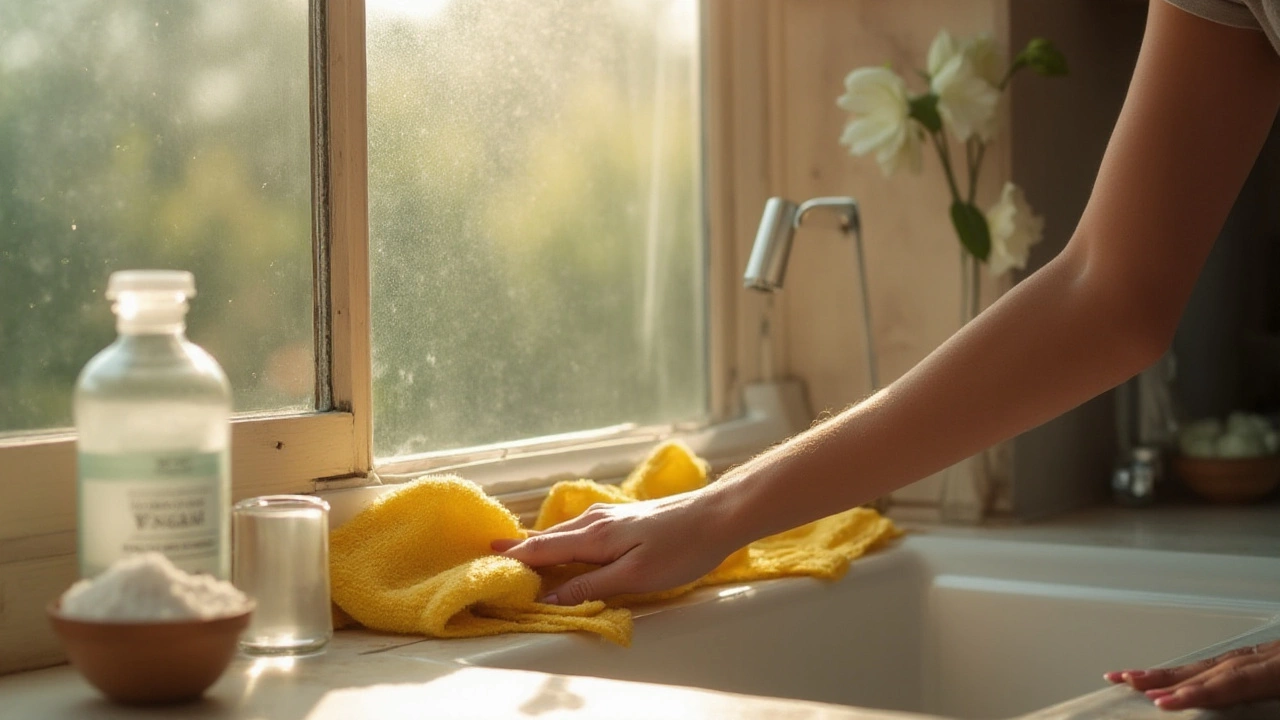
Baking Soda Magic
When it comes to achieving clean windows with a natural touch, baking soda proves to be a hidden gem. What makes this ordinary pantry item extraordinary is its mild abrasiveness and ability to cut through stubborn grime without leaving scratches on delicate surfaces. The secret to baking soda's cleaning prowess lies in its alkaline nature, which helps to neutralize acids and dissolve dirt, making it a fantastic choice for tackling window residue, especially in areas prone to pollution and dust build-up.
Baking soda is incredibly versatile and can be used in various ways to clean different types of window glass. For routine maintenance, create a gentle scrubbing paste by mixing baking soda with water until it reaches the consistency of toothpaste. Apply it using a soft cloth or sponge, gently rubbing it across the glass in circular motions to lift and remove dirt. For an extra boost, add a splash of vinegar to the mixture. This combination not only enhances the cleaning power but also provides a natural antibacterial effect, which is particularly beneficial in households with young children or pets.
If you're dealing with particularly stubborn stains, such as bird droppings or sticky sap, applying a thicker paste directly to the affected areas and allowing it to sit for a few minutes can make a world of difference. For those who prefer a slightly more hands-off approach, dissolving baking soda in warm water and using it as a spray-on cleanser can also yield great results. Just be sure to rinse thoroughly to avoid any residue, ensuring sparkling clean windows with minimal effort.
One of the most appealing aspects of using baking soda for window cleaning is its safety. It's non-toxic and hypoallergenic, making it an excellent choice for individuals sensitive to harsh chemicals. Plus, it's environmentally friendly; using baking soda helps reduce the carbon footprint left behind by commercial cleaners. A study by the Environmental Working Group found that some window cleaning products contained substances linked to respiratory irritation and environmental pollution, but with natural alternatives like baking soda, such concerns are minimized.
"Baking soda is a staple in green cleaning solutions, offering an effective yet gentle option for those looking to reduce their exposure to synthetic cleaners," notes eco-living expert Emma Pollard.What's more, baking soda is budget-friendly. A single box can be purchased for under a dollar, yet it offers countless cleaning opportunities around the home. For larger cleaning projects, buying in bulk can even further enhance savings. This cost-effectiveness makes it an attractive option for homeowners seeking to maintain their property without breaking the bank. Whether you're a DIY enthusiast or new to green cleaning, embracing baking soda magic could very well change the way you view window maintenance.
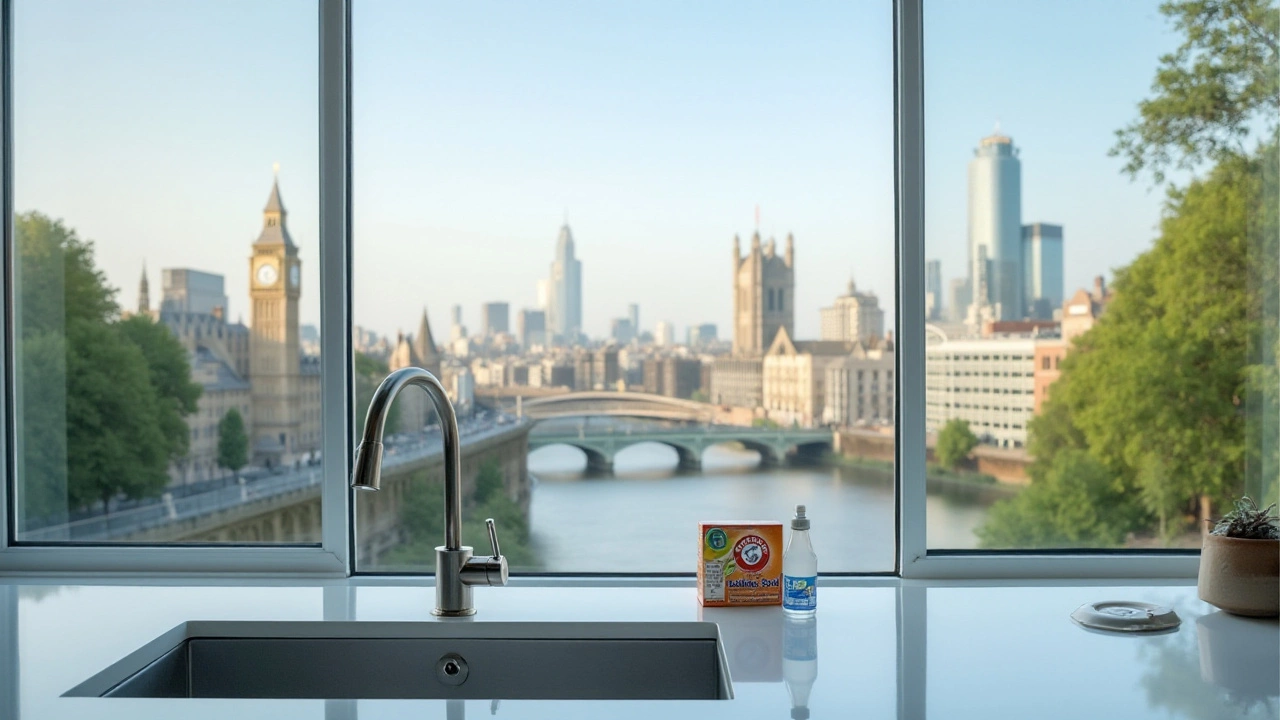
Commercial Cleaners
When it comes to finding the perfect cleaner for your windows, commercial products often come into play as viable and efficient options. Possessing formulations specifically designed to tackle grease and grime with precision, these cleaners promise results that natural solutions often cannot compete with. Many commercial options offer powerful grease-cutting agents which take on the toughest dirt; perfect for those high-traffic household windows that seem to attract the elements. Moreover, they often contain chemicals that help reduce streaking, making it easier to achieve that flawless, crystal-clear finish.
In the bustling aisles of any supermarket or home improvement store, window cleaning products abound with choices to fit every need and budget. One perennial favorite is Windex, a trusted brand known for its reliability and streak-free promise. Its ammonia-based formula is strong on dirt yet gentle on glass surfaces, catering to households with various cleaning needs. Another popular option, especially amid eco-conscious consumers, is Method Glass Cleaner. Free from ammonia and relying on plant-based formulas instead, it appeals to those who seek effectiveness without compromising health and environmental safety. Intriguingly, this cleaner has climbed the ranks rapidly as people lean increasingly towards green products.
"A study by the American Cleaning Institute suggests that the market for environmentally friendly cleaning products has grown by nearly 30% over the past decade, reflecting consumer demand for safer products."
Among premium choices, there exists an impressive contender called Invisible Glass. Touted for being residue-free, it utilizes a formulation that is invisible to the naked eye, hence its claim of "invisibility." This product is sought after by aficionados seeking that upper echelon of transparency on their windows. A lesser-known yet highly effective cleaner is Bio-Kleen Glass Cleaner, which harnesses coconut-based surfactants to obliterate spots without harming your health or the planet. When comparing these products, it becomes essential to weigh cost against effectiveness and safety, providing a clearer understanding of what suits your personal circumstances best.
For those yearning to maintain clean windows without fuss, several commercial cleaners eliminate guesswork involved in DIY solutions. While natural window cleaning solutions have their place, commercial ones often deliver results speedily and efficiently, catering to busy lifestyles where time is a noteworthy consideration. With a multitude of choices available, window cleaning becomes less about challenge and more about getting the shine you want effortlessly. When assessing options, be sure to look beyond the label and delve into ingredients and reviews—each tinted bottle tells a story, and it's up to you to decide the ending.
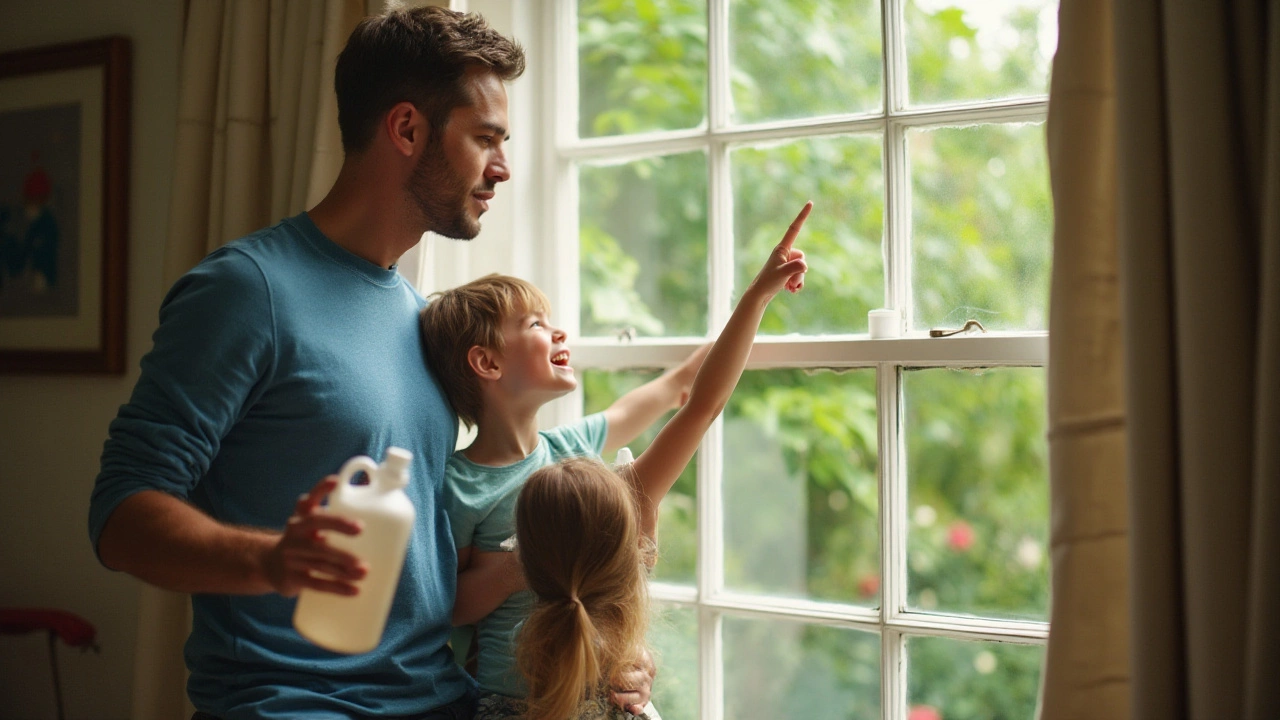
Tips and Tricks for Streak-Free Shine
Achieving a streak-free shine on windows isn't just about choosing the right window cleaning products; it's also about knowing the technique and timing of the task. A common mistake is cleaning windows on a sunny day, as the heat causes the cleaner to dry quickly, leaving behind unpleasant streaks. Instead, opt for a cloudy day or work on windows shaded from direct sunlight. Use a soft microfiber cloth, as its gentle fibers effectively trap and remove dirt without leaving scratches.
When cleaning, start from the top of the window and work your way down in a systematic S-pattern. This ensures that any drips are caught by the cloth as you move, preventing streaks from forming. For best results, clean in small sections and avoid using too much cleaner; excess liquid can lead to smudges and streaking. Always double-check your work from different angles, as streaks can be elusive and only visible from certain views. Taking a step back helps ensure everything is sparkling.
Several industry experts suggest using distilled water in your cleaning solution. Hard water from taps often contains minerals that can leave residues once the water evaporates. Distilled water, free from these minerals, mixed with white vinegar creates a powerful concoction that can outshine many store-bought cleaners. Meanwhile, an element of personal craftsmanship lies in drying. A popular hack is the crumpled newspaper technique – it's an old favorite for giving windows that polished clarity, thanks to its lint-free nature.
"Clean windows aren’t just about appearances—they affect your overall light quality and room ambience," says Emily Ford, a well-known home maintenance expert.
Another crucial detail is to replace or rinse out your cleaning cloths frequently. After a few wipes, microfiber or paper towels can get saturated with dirt and cleaning solution, leading to ineffective wiping. Keeping fresh cloths at hand prevents dust smears and streaks from occurring. If using a squeegee, wipe the rubber blade off after each stroke to remove dirt and prevent lines from forming. The correct angle of the squeegee is essential; it should be tilted slightly towards the direction you’re moving to ensure water is pushed off the window.
To add to your streak-free arsenal, maintain a regular window cleaning schedule. Clean windows every few months, or more often if you live in areas with frequent rain or high pollen. Consistent maintenance reduces build-up and makes each cleaning session much easier and quicker. It's all about creating habits that keep your windows in pristine condition year-round. Regular attention to detail can effortlessly maintain that crisp, clear view.
